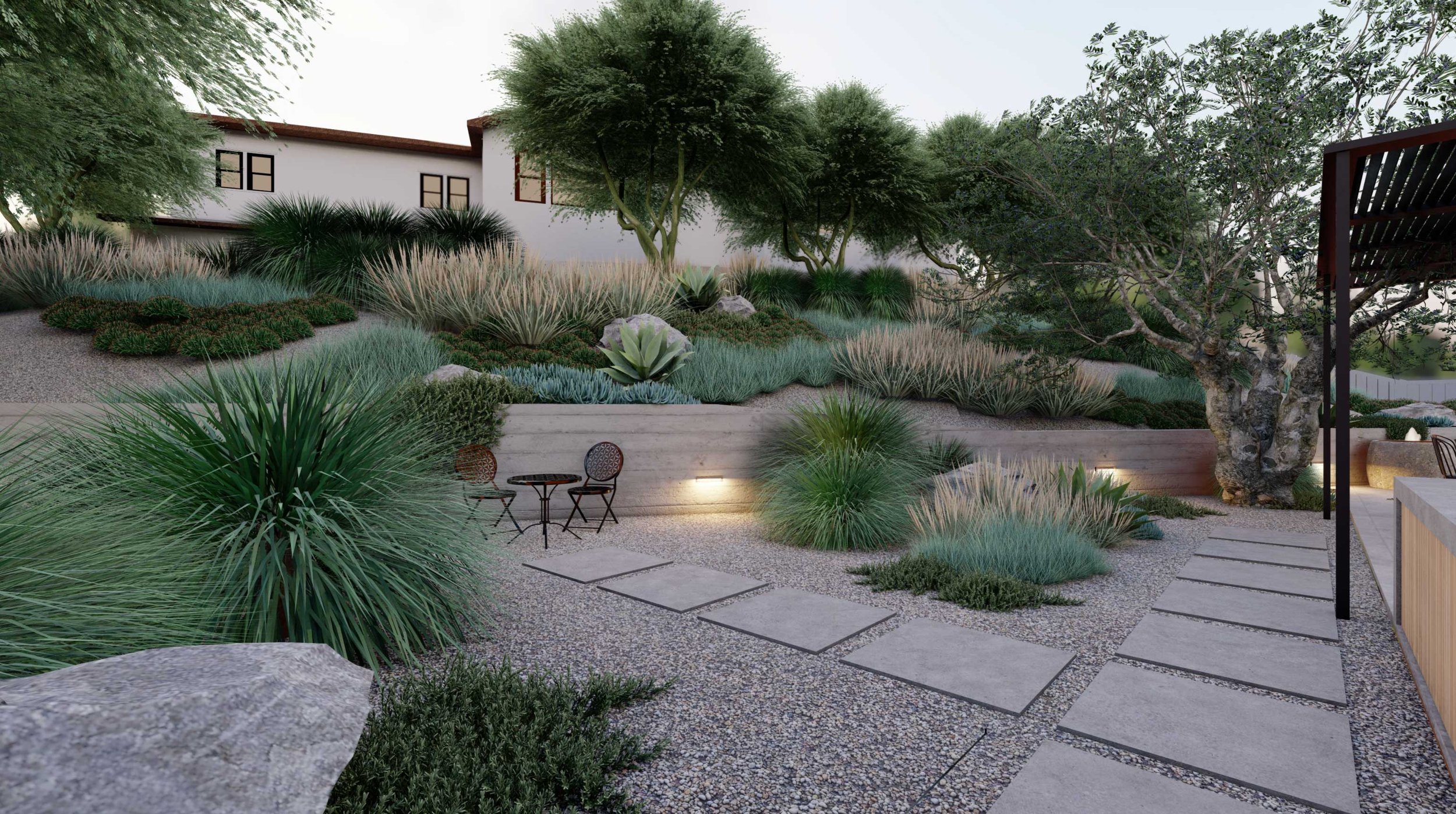The Basic Principles Of Landscapers
Table of ContentsThe 25-Second Trick For LandscapersFacts About Landscapers RevealedRumored Buzz on LandscapersOur Landscapers PDFsNot known Details About Landscapers Landscapers - Truths
- A garden feature where water is represented by an accumulated stone item, generally a crushed rock or granite. These are most commonly found in modern and Japanese garden layout.- A stone or flagstone patio, course, or pathway developed without a concrete base. The base would certainly be compressed gravel and the joints would be an accumulation or walkable ground cover. - A stone retaining or cost-free standing wall built without making use of mortar. An extremely competent mason is needed for a completely dry stack rock wall. The majority of wall surfaces in Rose city are not dry piled, even if they seem. - A below ground framework that collect water and permits it to reduce percolate right into the soil around it.
Landscape style that is suitable with a websites' setting in both look and sustainability without unfavorable influences to the setting. Edging in the landscape is a line of demarcation that develops visual rate of interest in the yard by dividing one sector from one more section.
Areas can additionally have a sensation of "unit" provided by trees, various other plantings, fences, or screens. The landscape near the entry to a building.
The Ultimate Guide To Landscapers

The aspect in a landscape design or location in a landscape that is implied to be most prominent. The focal factor can be a plant, rock, statuary, collecting area, or various other landscape attribute.

The Greatest Guide To Landscapers
Reduced plants that are enabled or encouraged to spread out over a location. Can refer to any kind of "tough" yard aspects consisting of statuary or rocks however many typically is used to refer to courses, patio areas, and walls - Landscapers.: Height distinction between the degree of water in a pond (or the degree of the pump if it sits outside the fish pond) and the upper outlet of water which impacts performance of the water pump in gph (gallons per hour).
A chemical made use of to manage weeds. Fencing boards that run horizontally, often utilized in contemporary or Japanese-inspired landscape designs. Lines that specify areas within a landscape principle. These frequently prolong from edges or essential attributes of an existing structure. Appropriate use fictional lines can aid the landscape feel attached to the home and other components.
Typical PNW landscapes are casual. A plant that spreads more than wanted, or into environments where it does damages.
The Landscapers Statements
Smart irrigation controller testimonials and recommendations here. 2-D rendering of the proposed watering system. Can include head positionings and coverage, pipe sizing, GPM specifications, and materials needed to mount this system. A watering strategy is normally unneeded for properties yet prevails for industrial jobs. Certified professional who makes landscapes, coached in engineering and design along with in cultivation.
The expert that prepares and develops landscape tasks, generally at a household or little commercial degree with the major layout motivation on growings. Landscape developers generally have less education than Landscape Architects and are not licensed. A finished landscape style, next outlining all elements for the new landscape. This normally takes the type of an illustration on paper.
Calcium product used to increase the pH in dirt, which will make it less friendly to moss (Landscapers). A water tight HDPE material utilized below ponds, streams and waterfalls in water functions. Making use of many growings of the same variety to fill out a location in the landscape. This can lower maintenance and water use in the yard.
A layer of compost or bark dust applied at the base of a plant. A plant that was existing in a geographic location before individuals started changing the landscape.
Not known Incorrect Statements About Landscapers
Just how the garden or a garden component is arranged in partnership to an existing or brand-new feature or to an instructions. Keeping a grass without using chemical herbicides, chemicals, or fertilizers. Turfs that are not mowed yet expanded in landscapes as perennials. This is a partially open sided relaxation or recreation location that joins a house, utilized for enjoyable, have a peek at these guys exterior eating and simply appreciating the outside environment.

Tiny round crushed rock. Plants that offer seasonal passion and after that pass away back in the wintertime. Annuals do not return the complying with period, but perennials do. Cold period yard that is the most common lawn yard in Portland, OR and the rest of the PNW.An open roofed framework over an outdoor patio or various other landscape attribute.
The most typical landscape crushed rock in the PNW. Area of the landscape created to take care of rain water up until it can saturate right into the ground.
Framework constructed from timber, concrete, leading rocks, blocks or other materials for supporting slopes and avoiding extreme disintegration. Slim watercourse. Creating a garden feature consisting mostly of rocks with plantings that complement and can thrive in the rough setting. Sprinkler head style that turns a stream of water across an area.
Get This Report on Landscapers
